Dreaming Of France: Minerve
Our visit to this Cathar village in the Minervois wine region of Southern France included a hike through gorges, history, and a meal to remember.
Minerve is a Medieval village in the Hérault Department in the Occitanie region of southern France.
During our vacation in this region wedged between Carcassonne and Narbonne, we made the short drive to Minerve at the suggestion of our host. Climbing the last winding miles gave us an impressive view of the town, which is classed among the most beautiful villages in France.
Minerve is perched on a plateau surrounded by limestone gorges that were carved over the centuries by the Cesse and Brian Rivers that encircle the village. These waterways have left behind a series of caves and rock bridges that are as much an attraction as the village.
After parking just above the village, we talked down a path into Minerve that gave us a closer view of the gorges.
Minverve is a small cluster of streets with a mix of boutiques and restaurants.

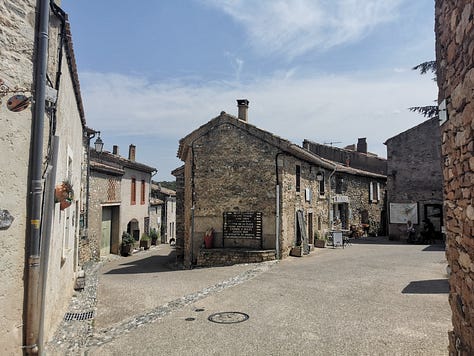
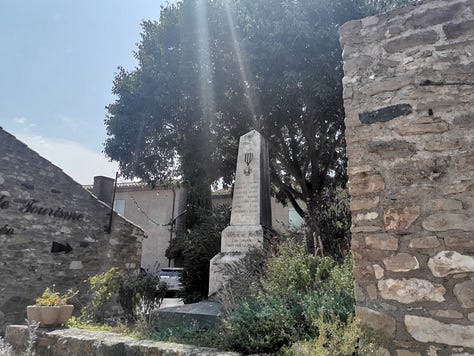
On the far side of Minerve, we walked down a stone staircase to reach the bottom of the gorge.
Once we reached the bottom, we could have turned left and followed a 9 KM route. We turned right and took a shorter path, but one that was still spectacular.
Rounding the first bend, we approached the stone bridge that leads into Minerve. Just before reaching it, we entered the “Pont Grand,” the first of a series of natural “bridges” carved into the limestone.
We walked for about an hour before re-tracing our path back to Minerve.
Cathar Country
Minerve has been on the map since at least 873. But its big historical moment came during the 13th century when it emerged as a gathering point for the religious heretics known as the Cathars.
The Cathars were real party people. These Medieval Christian extremists broke with the Roman church, which they saw as corrupt. The Cathars believed in a duality: a Good God represented by the New Testament and an Evil God represented by the Old Testament. Because the Old Evil God made everything in the world, that meant that all physical things were evil.
While they followed the teachings of Jesus, they did not believe he took physical form. Because all physical things were evil, they did not build churches or write stuff down, which means their true beliefs and legacy are a bit fuzzy. Oh, and sex and marriage were forbidden because pleasure and touching were bad bad bad. (Not super strategic for propagating your cult, but…) They were so against reproduction that they also did not eat cheese, eggs, meat, or milk because there would have been some animal sex behind all of it and killing animals was bad.
Despite their religious extremism, they have been romanticized by some because they were opposed to ownership of private property, hated war, and believed men and women were equal. They were Religious Fanatics AND they were Hippie Vegan Socialists. So whether you’re a religious extremist rooting for the apocalypse, or a New Age seeker looking for spiritual motivation, the Cathars had a little something for everyone.
Naturally, the Pope was having none of it.
He teamed up with some scheming Northern French nobles who saw this as an opportunity to seize control of the semi-independent Southern region. Thus began the first Church-sanctioned crusade. This was a pre-game warmup to the later Middle East crusades and the Spanish Inquisition.
Led by the Big Baddy Simon de Montfort, French troops laid siege to Minerve for five weeks in the summer of 1210. This included building a giant catapult on the far side of a gorge and bombarding the locals who lacked food and water.
Of course, Minverve fell and de Montfort gave the Cathars a choice: renounce their belief and accept the Pope, or else…
140 Cathars chose ‘or else’ and were burned alive at the stake. Some even reportedly threw themselves into the burning wood piles.
Hungry In Hérault
After the hiking and history, we treated ourselves to a stellar lunch at Le Relais Chantovent, a restaurant in the heart of Minerve with a terrace overlooking the gorges.
We started with 2 aperitifs:
L’estivale: Kino Karo (this was new to me, but it’s a local citrus-based spirit), sparking wine, slices of orange and lemon.
L’Hibiscus: Chardonay with a confite of hibisicus.
The menu says L’Hibiscus is the best seller, but we preferred the L’estivale.
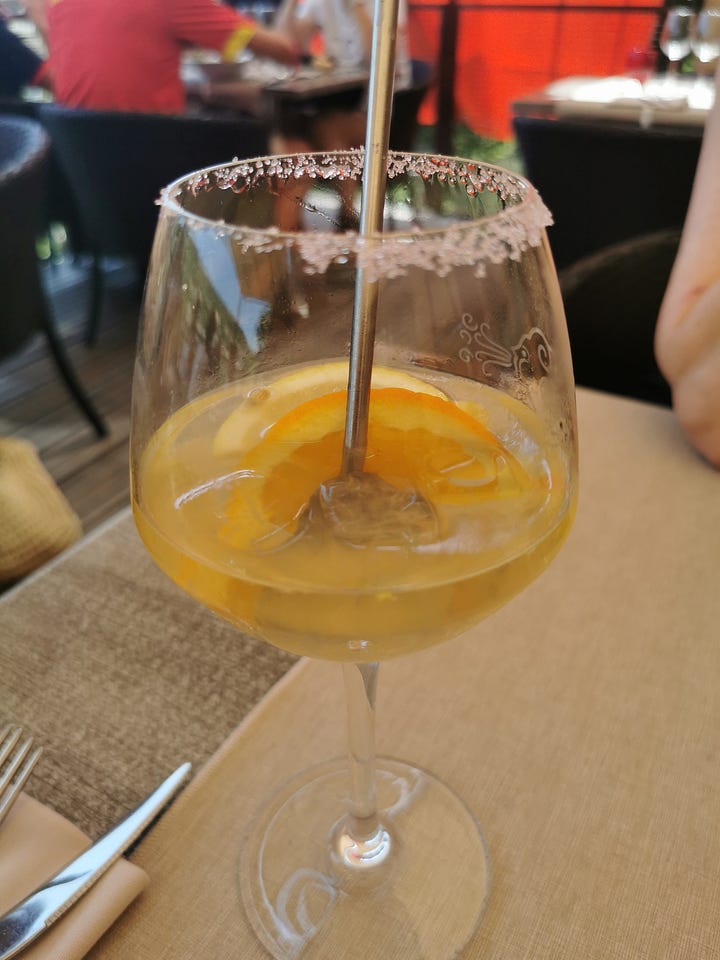
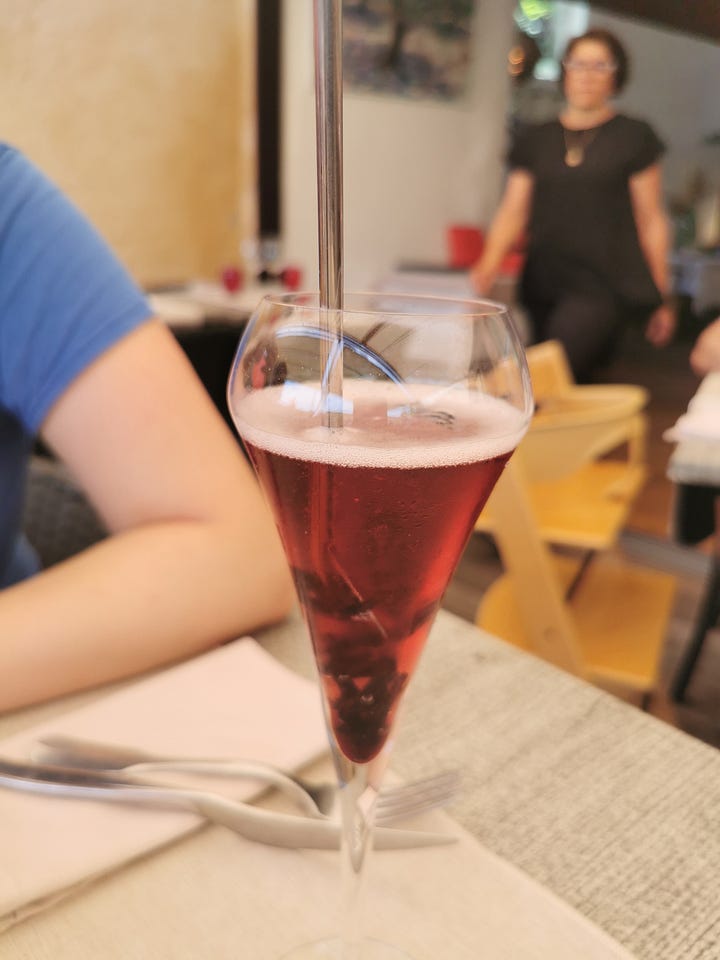
Amuse bouche: a melon-based delight.
Entrée:
Fresh goat cheese of Combebelle, courgette carpaccio, pepper slurry, parmesan crumble, and oat flakes.
Beef tataki marinated with soybean, spring onions, and roasted seeds.
Vegetables, garlic cream, gazpacho of cucumber, and green pepper.
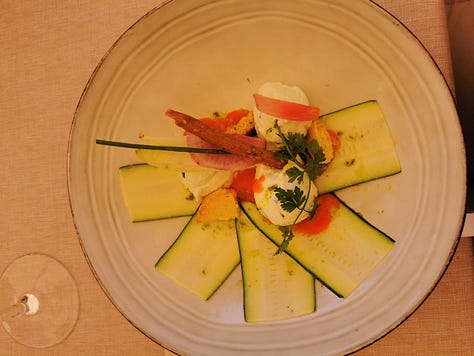


Plat Principal:
Slow-roasted pork (24 hours at 64 degrees), lemon condiment.
Slow-roasted veal medallion, cooked in the fig leaf (22 hours at 66 degrees).
Vegetarian plate
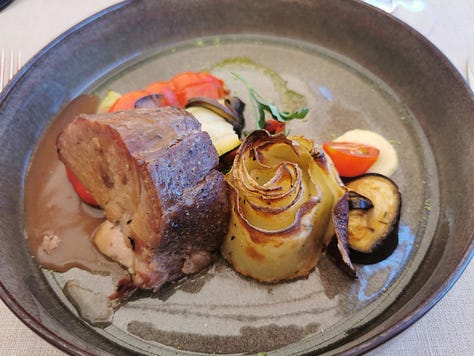
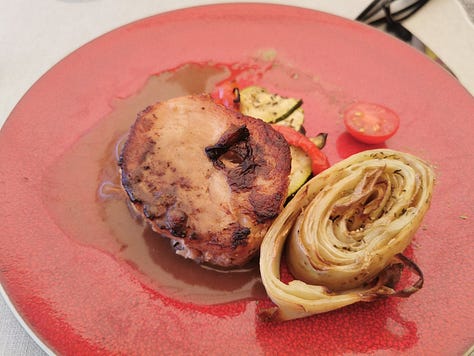
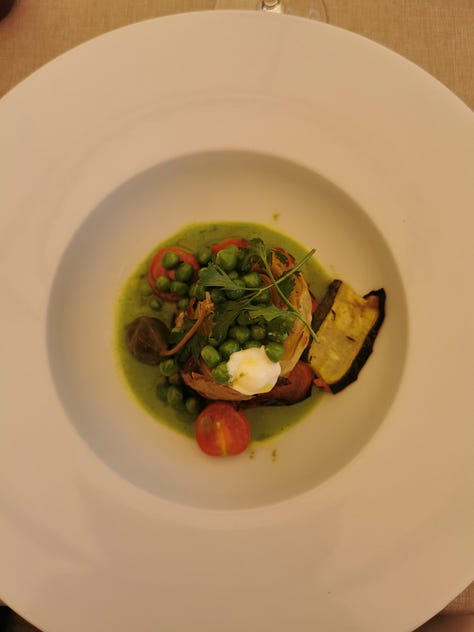
Dessert:
Chocolate fondant Valrhona, hazelnut ice cream from Piedmont,
Roasted nectarine, verbena-lemon sorbet, almond slices.

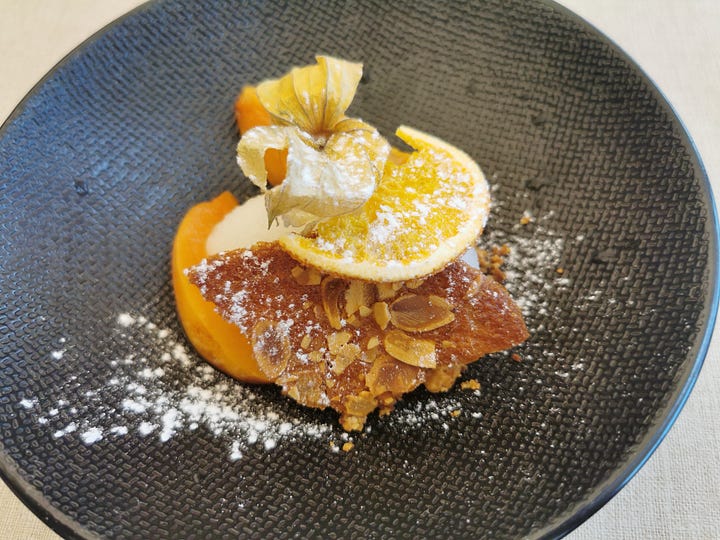
The Cathars wouldn’t have appreciated any of it. But we did.
Chris O’Brien
Castelnau-d'Aude



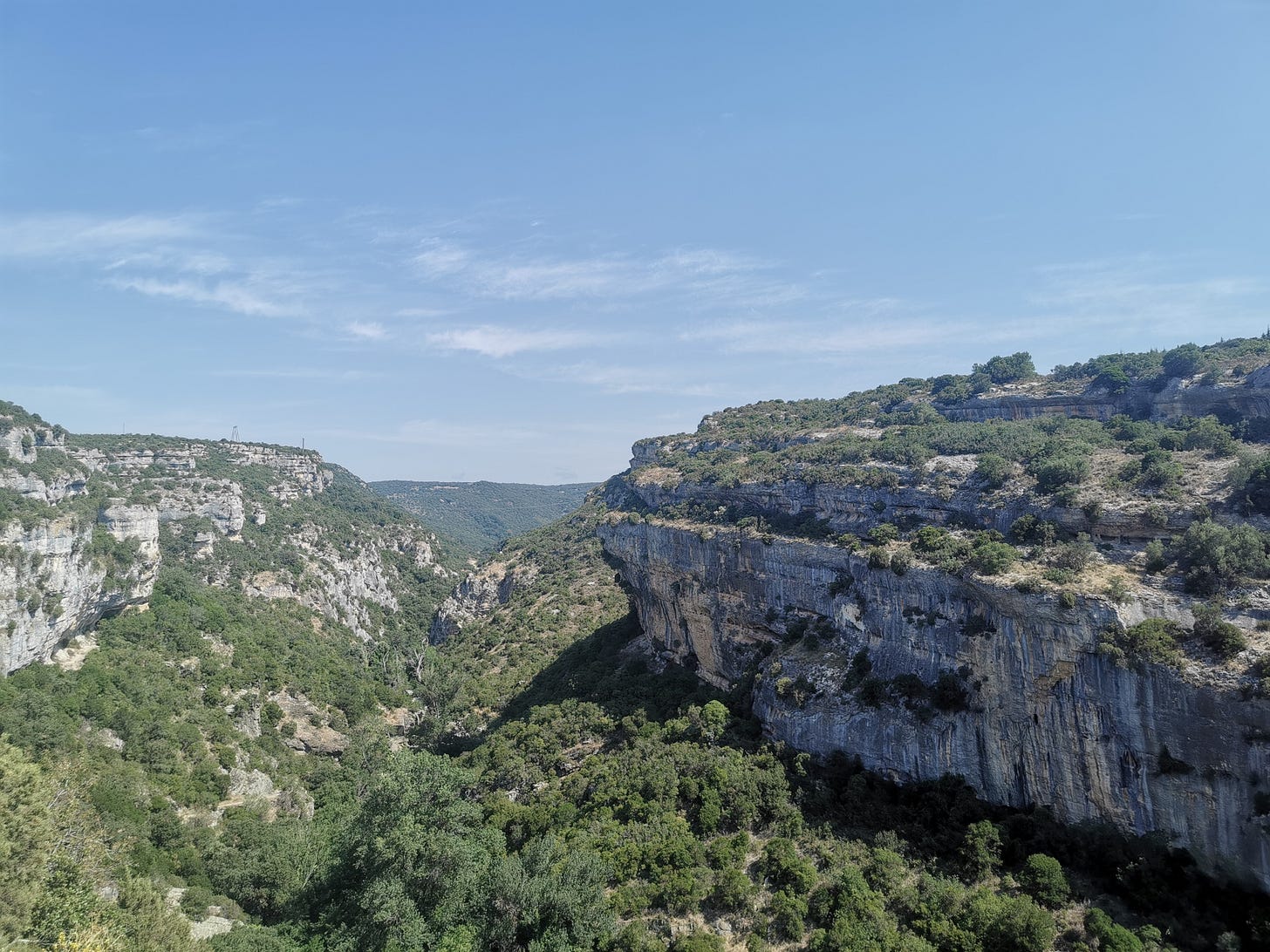



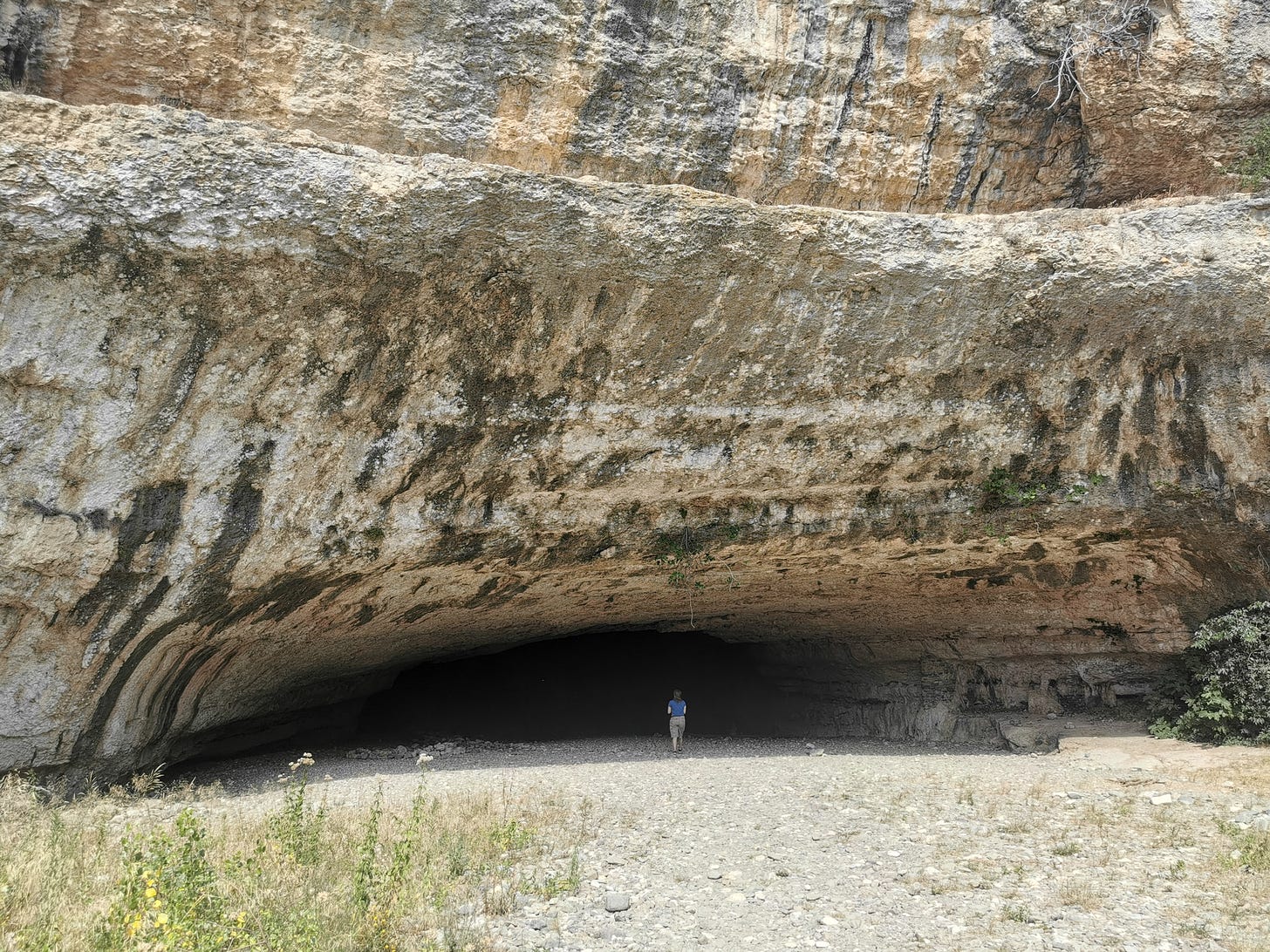


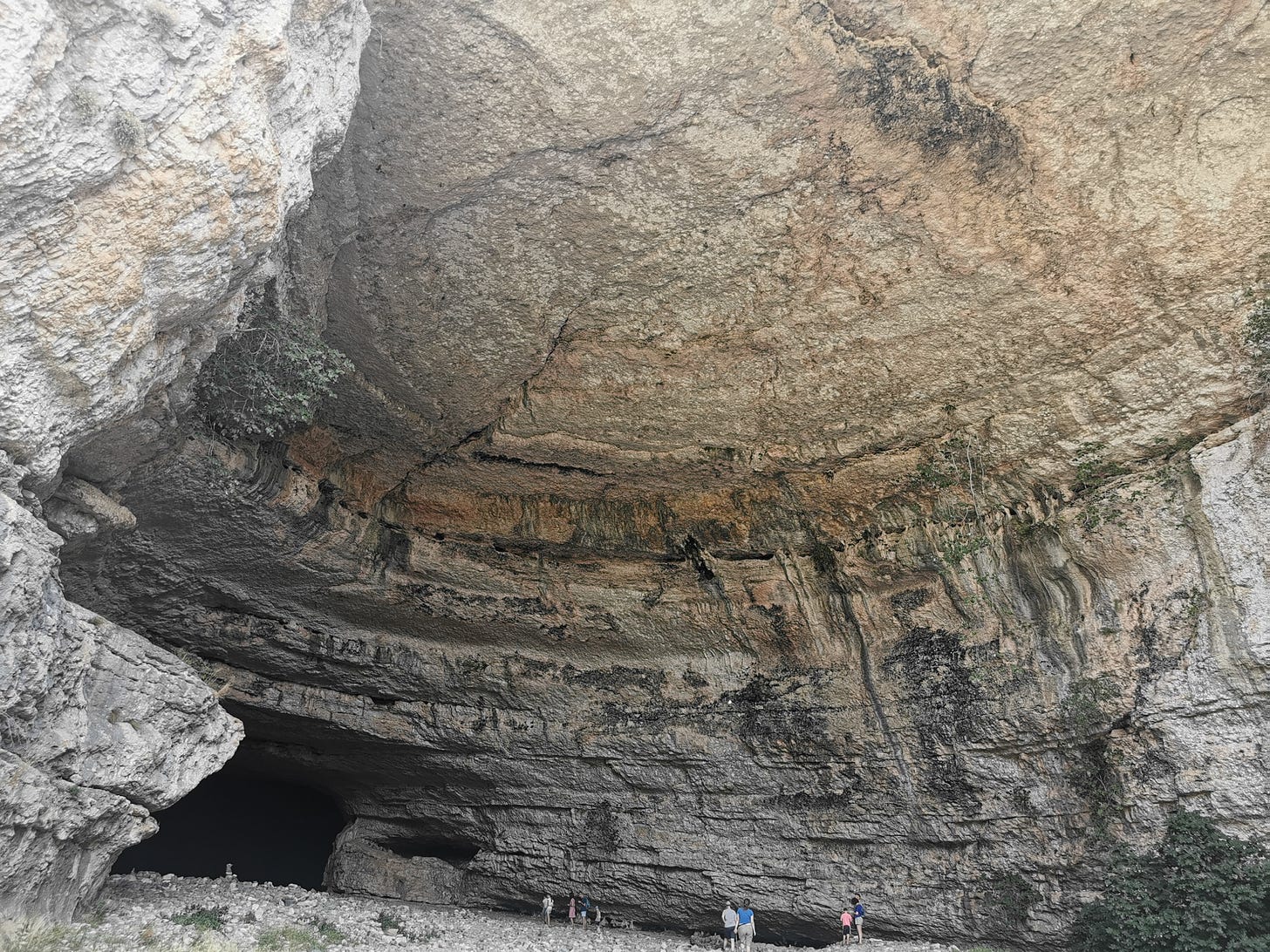

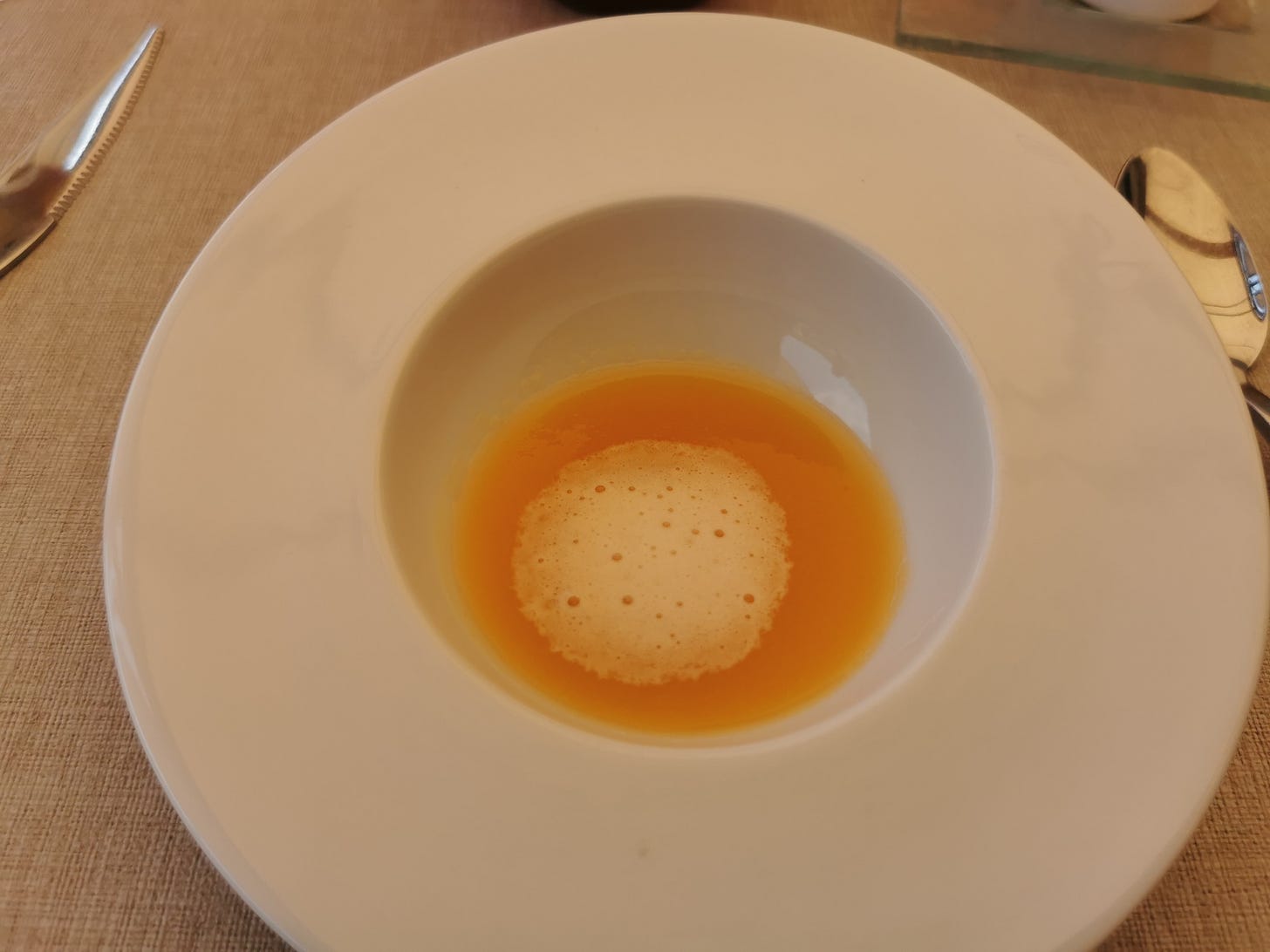
Bloody lovely, thanks. Enjoyed the history lesson and the fooooood.